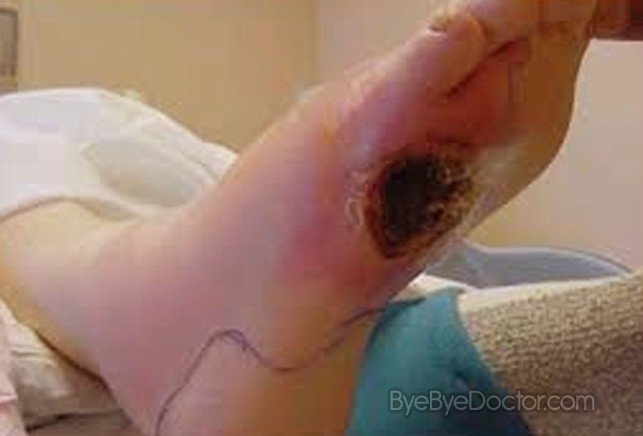Important Information On Diabetic Foot Ulcers And Other Health Issues
A significant danger from such a wound is infection, which, in a blood-starved region of tissue, can be difficult to treat. An infection that grows in seriousness can place the preservation of the affected limb at risk and even be life-threatening. The American Podiatric Medical Association estimates that 14 to 24 percent of diabetics who develop a foot ulcer end up undergoing amputation of a lower limb. It's also estimated that 50 percent of diabetics who lose one foot to the disease will lose the other within five years. Exercise regularly, since this improves circulation (and therefore healing). However, don't exercise if you have open sores on your feet. While there is a strong genetic component to developing this form of diabetes, there are other risk factors - the most significant of which is obesity. There is a direct relationship between the degree of obesity and the risk of developing type 2 diabetes, and this holds true in children as well as adults. It is estimated that the chance to develop diabetes doubles for every 20% increase over desirable body weight. Many of the food preparations that are used daily are prepared with baking powder and soda. Soda decreases the activity of the pancreatic juice, which juices are used in the body to digest protein, fats, and carbohydrates. While a number of dressing choices are available, Duoderm stands out among them. It is a type of hydrocolloid dressing (absorbs exudates and forms a gel) which is used to treat relatively small, superficial and slow healing wounds. It firmly sticks to the skin and stays on longer than most other type of dressings which promotes quick healing and prevents from infections. Place the sticky side of the dressing patch over the wound so that it properly sticks to the skin. If the wound is in an area where it may be difficult to keep the dressing in place, place medical tape around the edges of the dressing patch The Multidisciplinary Diabetic Foot and Wound Clinic aims to protect and care for the feet of patients with diabetes. Foot care is a critical part of treating diabetic patients, as they are are two to five times more likely than other individuals to develop foot problems Such conditions may include chronic lower extremity ischemia, or restricted blood flow to the legs and feet, as well as neuropathy , or nerve pain and nerve damage. These problems can cause sores and injuries that may go unnoticed until foot ulcers develop. Further diabetes complications may follow, which could ultimately lead to foot amputation
While a number of dressing choices are available, Duoderm stands out among them. It is a type of hydrocolloid dressing (absorbs exudates and forms a gel) which is used to treat relatively small, superficial and slow healing wounds. It firmly sticks to the skin and stays on longer than most other type of dressings which promotes quick healing and prevents from infections. Place the sticky side of the dressing patch over the wound so that it properly sticks to the skin. If the wound is in an area where it may be difficult to keep the dressing in place, place medical tape around the edges of the dressing patch The Multidisciplinary Diabetic Foot and Wound Clinic aims to protect and care for the feet of patients with diabetes. Foot care is a critical part of treating diabetic patients, as they are are two to five times more likely than other individuals to develop foot problems Such conditions may include chronic lower extremity ischemia, or restricted blood flow to the legs and feet, as well as neuropathy , or nerve pain and nerve damage. These problems can cause sores and injuries that may go unnoticed until foot ulcers develop. Further diabetes complications may follow, which could ultimately lead to foot amputation After washing, scrubbing and drying the feet properly, moisturize your feet using urea based lotions. Lotions with urea content are highly effective in treating corns and calluses, dry and scaling skin. It is because urea sits on the skin and pulls water to the epidermis and keeps it moisturized. However, please do not moisturize in between the toes because it might cause fungal infections. Urea based lotions are available at the local drug and health stores, but before making a purchase, please consult a medical provider because it might cause allergies.
After washing, scrubbing and drying the feet properly, moisturize your feet using urea based lotions. Lotions with urea content are highly effective in treating corns and calluses, dry and scaling skin. It is because urea sits on the skin and pulls water to the epidermis and keeps it moisturized. However, please do not moisturize in between the toes because it might cause fungal infections. Urea based lotions are available at the local drug and health stores, but before making a purchase, please consult a medical provider because it might cause allergies.